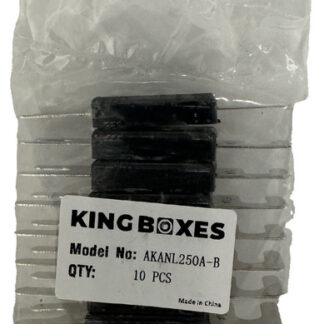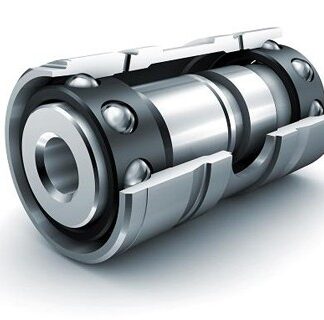Description
A bearing is a machine element that constrains relative motion to only the desired motion, and reduces friction between moving parts. The design of the bearing may, for example, provide for free linear movement of the moving part or for free rotation around a fixed axis; or, it may prevent a motion by controlling the vectors of normal forces that bear on the moving parts. Many bearings also facilitate the desired motion as much as possible, such as by minimizing friction. Bearings are classified broadly according to the type of operation, the motions allowed, or to the directions of the loads (forces) applied to the parts Deep groove ball bearings are the most widely used roller bearing type in the world due to their versatility and overall performance. They are characterized by having deep raceway grooves in which the inner and outer rings have circular arcs of slightly larger radius than that of the balls. They also have non-separable rings. Their straight forward basic design has many advantanges.
Excellent for high speeds.
Good radial load capacity.
Acceptable axial load capacity in both directions.
Have low torque capacity at startup and running speeds.
Can operate with low noise.
Require little maintenance.
As flexible as the performance is, the configurations of single row ball bearnigs is also as versatile. These bearings often have steel shields or rubber seals installed on one or both sides and are pre-lubricated with grease. Also, snap rings are sometimes used on the outside edge. While many different retainers are available, pressed steel cages are most commonly used
Metal bearings are essential components in a wide variety of machines and equipment. They allow for smooth, low-friction rotation, which is essential for many applications. The manufacturing process for metal bearings is a complex one, but it can be broken down into the following steps:
- Raw material selection. The first step is to select the appropriate raw materials for the bearing. This will depend on the specific application, but the most common materials used are steel, bronze, and plastic.
- Smelting. The raw materials are then melted down and cast into ingots or billets.
- Machining. The ingots or billets are then machined into the desired shape. This includes the inner and outer rings, the balls, and the retainer.
- Heat treatment. The machined components are then heat treated to improve their strength and durability.
- Finishing. The heat-treated components are then finished to the desired surface finish. This may involve grinding, honing, or lapping.
- Assembly. The finished components are then assembled into the final bearing.
Once the bearing is assembled, it is ready for use. Metal bearings are used in a wide variety of applications, including:
- Automotive. Metal bearings are used in cars, trucks, and motorcycles to reduce friction and wear.
- Aerospace. Metal bearings are used in airplanes and helicopters to ensure smooth rotation of the rotors and other components.
- Industrial machinery. Metal bearings are used in a wide variety of industrial machinery, such as conveyors, pumps, and turbines.
- Medical devices. Metal bearings are used in some medical devices, such as artificial joints and pacemakers.
Metal bearings are an essential component in many machines and equipment. They allow for smooth, low-friction rotation, which is essential for many applications. The manufacturing process for metal bearings is a complex one, but it ensures that the bearings are strong, durable, and able to withstand the rigors of use.
Here are some additional details about the manufacturing process for metal bearings:
- The raw materials for metal bearings are typically steel, bronze, or plastic. Steel is the most common material, as it is strong and durable. Bronze is also used for bearings that need to be corrosion-resistant. Plastic bearings are used in applications where weight and cost are important factors.
- The machining process for metal bearings is complex and requires precision equipment. The components must be machined to very tight tolerances in order to ensure that they fit together properly and function correctly.
- The heat treatment process for metal bearings is used to improve their strength and durability. The components are heated to a specific temperature and then cooled in a controlled manner. This process creates a hard outer layer and a tough inner core.
- The finishing process for metal bearings is used to improve their surface finish. This may involve grinding, honing, or lapping. The surface finish is important for reducing friction and wear.
- The assembly process for metal bearings is typically automated. The components are assembled on a precision machine that ensures that they are properly aligned.
Metal bearings are an important part of our modern world. They are used in a wide variety of machines and equipment, and they help to make our lives easier and more efficient.




